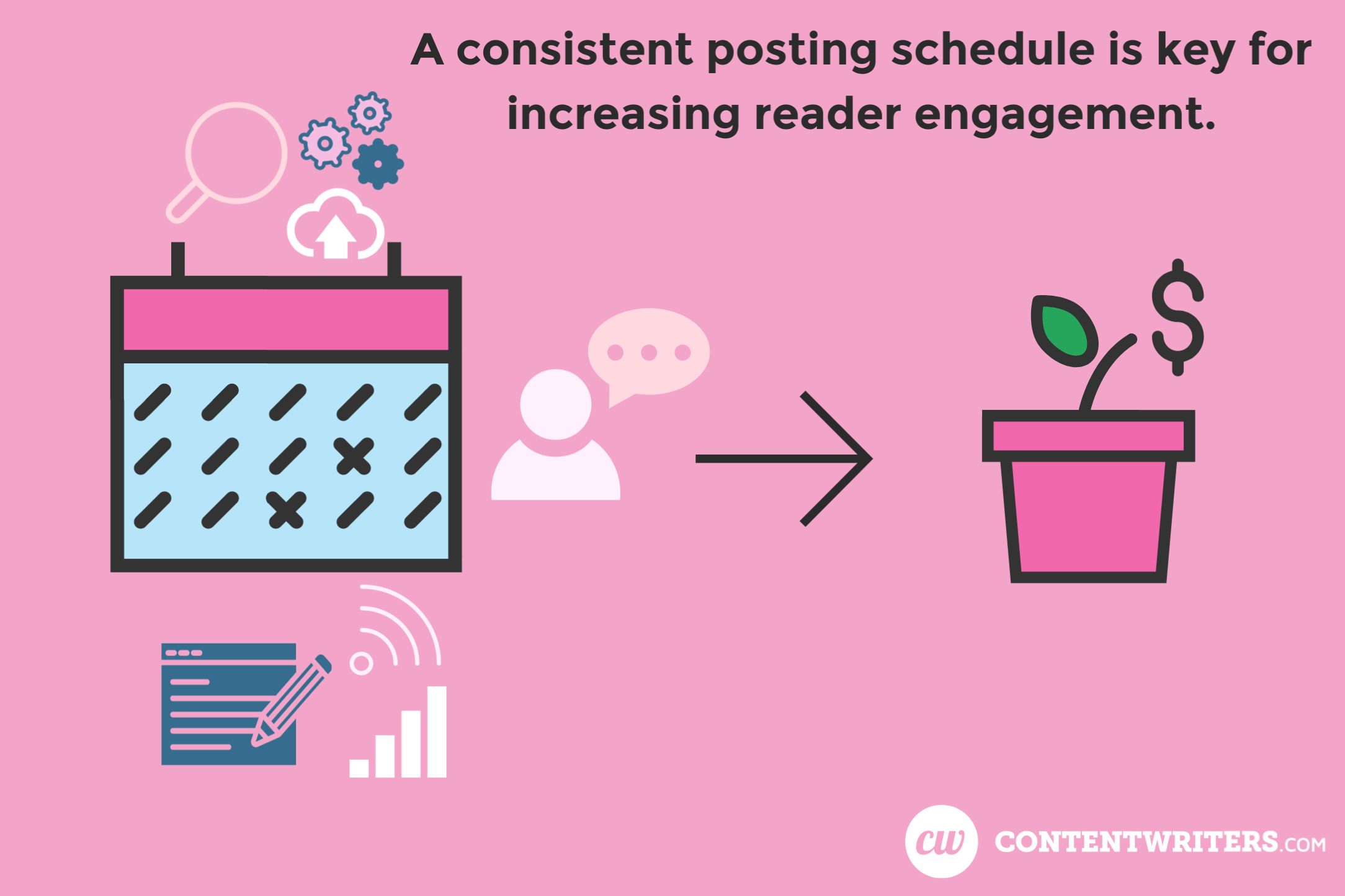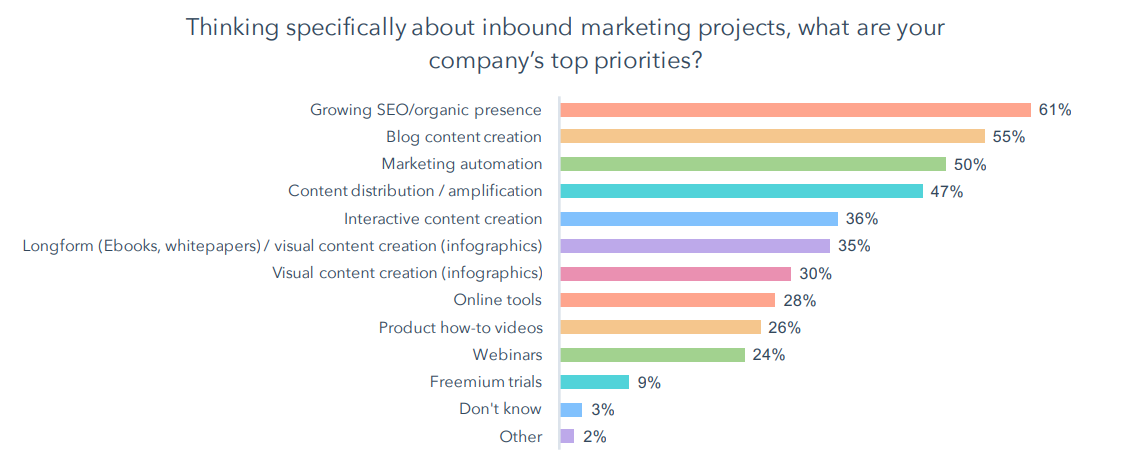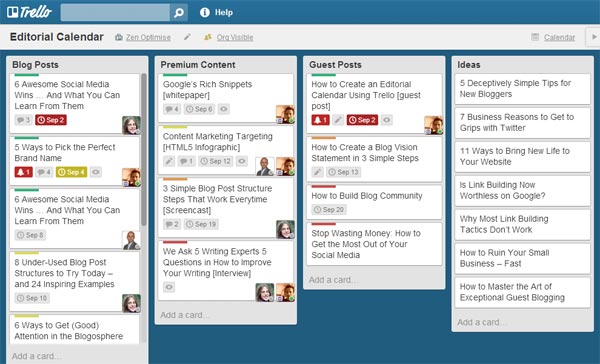
Grow Your Corporate Blog from 0 to 1,000 Visitors per Day in 3 Months
Are you in the process of rolling out a corporate blog for the first time? Do you have a blog that has been sitting dormant for longer than you can remember?
According to HubSpot, 55% of marketers say blog content creation is their top inbound marketing priority. Furthermore, more than 40% of B2B marketing professionals say blogging is their most important type of content.
Now that you realize that your competitors are likely blogging to drive traffic and generate leads, it’s time for you to get on board.
But how do you get started? What’s the key to growing your blog’s traffic?
While there’s no one-size-fits-all strategy, there are several steps you can take to grow your corporate blog from 0 to 1,000 visitors per day within three months. Does that sound good to you?
Let’s take a look at the five things you need to do:
1. Create a Content Calendar
Step one is all about getting organized. Without a content calendar, you’ll find yourself “throwing content at your blog” and hoping it sticks.
There are a variety of tools you can use to create a content calendar, ranging from a simple Google Sheet to Asana or Trello.
This doesn’t have to be anything complex. Start with these four columns and then build out from there based on your particular style and requirements:
- Publish date
- Description, outline, or writer brief
Here’s an example:
- Publish date: November 1, 2019
- Topic: How to Win Big on Social Media in 2020
- Keywords: social media 2020, social media strategy
- Description or writer brief: Outline what will and won’t work on social media in 2020.
The goal of a content calendar is to keep you organized, ensure you’re pushing out the right content at the right time, and help you and the rest of your team stay on the same page.
Tip: The format of your content calendar will evolve as your blog grows, so don’t be shy about adding new columns and eliminating anything that no longer makes sense.
Once you have a content calendar, you’ll feel better about everything else falling into place.
2. Find Quality Writers
Maybe you want to hire a content writing service. Or maybe you want to hire a dedicated corporate blogger. Or perhaps it makes sense to have your employees write all your blog content.

It doesn’t matter what approach you take, as long as you have a team of writers by your side who can create high-quality content that engages your audience and is positioned to rank well in the search engines.
If you’re the only one creating content for your blog, consider changing your approach. Another voice can go a long way in bringing in and connecting with new readers.
For instance, if you run a SaaS company, consider asking your sales manager to create a blog post on product features or the sales process. Even if you are able to do it yourself, there’s a better chance that a more experienced professional will have more success on this kind of post.
There are quality writers everywhere. You simply need to find them.
3. Choose the Right Topics and Keywords
Perhaps the most important step you take is to choose the right topics and keywords for your blog. Without this, you could end up wasting time creating content that doesn’t resonate with your audience or the search engines.
Answer these five questions as you go through this process:

Once you answer these questions, you’ll have a clear idea of where to begin the topic and keyword selection process.
Here are some helpful steps to take:
- Brainstorm 25 to 50 blog post ideas: Rather than wasting too much time on this, write down anything that comes to mind. You can pare down your list in the future.
- Use a keyword research tool: There are plenty of these to choose from, with Google Keyword Planner among the most popular and powerful (and it’s free). You can spend hours on end searching through keyword variations, but in this step you simply want to identify your core keywords and a handful of long-tail keywords.
- Analyze your competitors: what type of topics are they tackling? Which keywords are they focusing on? What can you do better than them? If you know what’s working for the competition, you can create a plan for outdoing them in the future. It’ll take time, but the right strategy will put you on the path to success.
4. Share It With the World
Unfortunately, creating content isn’t good enough. Sure, you hope that it eventually drives organic traffic to your website, but there are other ways of spreading the word.
Social media allows your business to place content in front of millions upon millions of people, regardless of the subject matter or industry.

For example, LinkedIn is a good site to share your blog posts as updates. You can also rework the content and publish it in LinkedIn blog posts.
Going one step further, don’t be shy about reaching out to key people in your industry to share your content.
A strategy that works is mentioning key influencers in your blog posts. Next, contact them to share the piece. When done correctly, this can accomplish a few things:
- Make the person aware of your blog, which may lead them to learn more
- Entice them to read it and share their professional feedback (which is super valuable)
- Present them with the opportunity to share the content with their audience
Even if only one of these things happens, you’ll benefit from it in the long run. You don’t have to go overboard with this approach. A simple email or message on social media will do. While some people will ignore you, others will engage.
When you’re proud of your content, you’re happy to share it with the world. So, make that your goal!
5. Stay Consistent
There is no right or wrong answer regarding how often you should publish fresh blog content. Some companies swear by posting something new at least once a day. Others believe that once or twice a week is more than enough. And then there are some that blog only once or twice per month.

Your frequency depends on a variety of factors, such as:
- The amount of time you have for blogging
- The number of writers on your team
- Your audience and how they respond to your content
- Your industry
Regardless of the frequency you choose—and it doesn’t have to be exact—you must maintain some level of consistency.
Blogging isn’t something you do today, forget about tomorrow, and pick back up in a few months. It’s okay if you don’t post something new every day or even every week, but there should always be a plan guiding you. Consistency is the key!
A consistent posting schedule is one that works for you, your team, and your audience. If you get into the habit of posting three times per week, your audience will expect it from you in the future—and if they don’t get it, they may go elsewhere for fresh content.
Tip: A content calendar (see step #1 above) will help you maintain a consistent schedule. Review it regularly to ensure that you’re hitting all your publishing goals.
Final Thoughts
So, there you have it. A successful corporate blogging strategy can bring loads of traffic to your website, which you can then convert into paying customers.
If you follow these five steps, it won’t be long before you’re getting more out of your blog than ever before.
Chris B. is a freelance writer and digital marketing consultant based in Pittsburgh, PA. When he’s not creating content, Chris enjoys watching sports, working in the yard, and spending time with his family.






